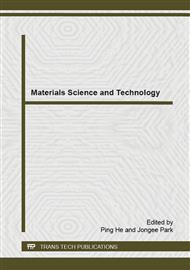p.154
p.160
p.165
p.171
p.175
p.183
p.191
p.197
p.205
The Precision Forging Experiment of Mg Alloy Drop Forging Using Computer Simulation
Abstract:
Rapid development of automotive industry brings increasing demand for die forgings made from non-ferrous metals. Market economy stimulates drop forges to produce forged pieces of highest quality and dimension precision with the accent on reduction in production costs. Precision die forging without flash belongs to progressive and economical technologies of die forgings production. This paper describes an experiment of precision forging in closed die of magnesium alloy type AZ 31. Given alloy type Mg-Al-Zn is suitable for bulk forming and is characterized by good hot formability. Achieved results may be applied in practice at production of longitudinal shaped forgings e.g. levers and connecting rods. In order to verify a design of closed die forging technology regarding the lever-shaped forged piece, simulation program MSC.SuperForge was used. Numeric simulation was significantly helpful at optimization of semi-product shape and dimensions and confirmed correct plastic flow of material in closed die cavity. The objective of this contribution was to point out current trends in searching for economical measures at production of die forgings from alloys of non-ferrous metals.
Info:
Periodical:
Pages:
175-180
Citation:
Online since:
December 2014
Authors:
Price:
Сopyright:
© 2015 Trans Tech Publications Ltd. All Rights Reserved
Share:
Citation:


